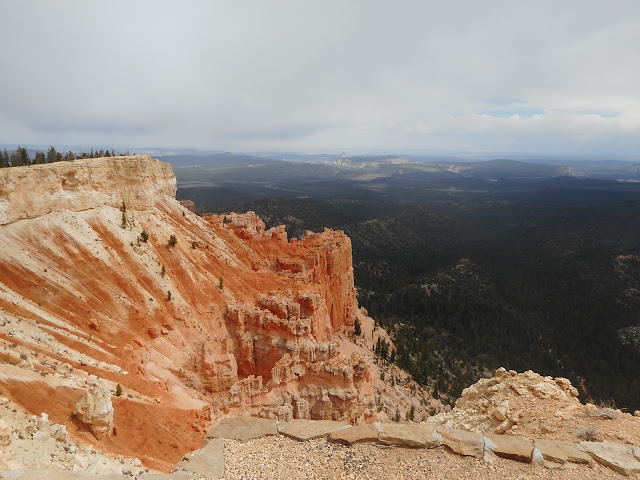ANTELOPE Island is by far the largest and most popular isle in the Great Salt Lake. With
Utah State Park status, the island is visited by thousands annually. However,
is the island technically misnamed?
“Island
offers nature study. Antelopes refused to remain. Bathing beaches unsurpassed”
was a July 2, 1922 headline in the Salt Lake Telegram newspaper.
The Isle was
originally titled “Church Island,” because The Church of Jesus Christ of
Latter-day Saints originally owned it and early pioneers vacationed there.
The Telegram
story states, “The name ‘Antelope Island’ became the name in common use after
an attempt was made to range a herd of antelope placed upon its hills. The
conditions were suited to these animals and their efforts to escape is one of
the most tragic stories of animal life.”
The
dissatisfied leader of the Antelope jumped in the briny waters and was willing
to try and swim up to 16 miles to the enticing green fields of the mainland of
Davis County. The other antelope followed. Only one antelope reached the shore
and died from exhaustion. The others drowned in the lake.
This
extinction apparently happened some years before 1922. And, soon after, a herd
of buffalo were placed on the island. They flourished and did not attempt to
flee the isle.
Buffalo on Antelope Island.
In fact, the
Davis County Clipper of Sept. 12, 1924 stated, “… for the last thirty years,
the name Buffalo Island has been used interchangeable with the other two names
(Church and Antelope),” because one of the nation’s largest surviving herds of
Buffalo reside there.
Notwithstanding,
it must be mentioned that some of the earliest of pioneer visitors to the
Island had reported seeing a herd of antelope there.
The Davis
County Clipper of Nov. 17, 1933 reported: “Late in the fall of 1848 while
riding at the north end of the Island, Lot Smith, Fielding Garr and Heber P.
Kimball came unexpectedly upon a herd of antelope …”
(Heber P. Kimball was a son of Heber C. Kimball.)
Thus, antelope
may have naturally lived on the Island in the mid-19th Century.
Perhaps, they were hunted out and later some antelope transplanted there hated
the conditions there then. (There may likely still be some antelope living on
the isle today, but buffalo far outnumber them.)
So, “Buffalo
Island,” instead of “Antelope Island” could have become its official moniker.
MORE
HISTORY:
That's not water, it's the Salt Flats.
-“Legislators
visit Great Salt Beds” was a March 3, 1909 headline in the Deseret Evening
News. The Western Pacific Railroad was showcasing its new train line to
Wendover and for many this was the first time they had seen the immense natural
feature we call today, “The Bonneville Salt Flats.”
The story
mentioned how the railroad had to use dynamite to make deep holes in the
gleaming white salt flats to erect telegraph poles. It also mentioned that the
salt flats could be of immense value – even to the University of Utah – once
the U.S. Supreme Court decided on their ownership. The immense salt could
provide the salt needs of the world for a number of years.
It was not
until several years later that the salt flats were envisoned as a speedway.
Visitors walking on the Salt Flats.
-“Expect to
break world records … Trial runs are made. Salt beds make ideal racing course;
Fast time marked up” was an Aug. 12, 1914 headline in the Salt Lake Tribune.
While they
were still called “salt beds,” instead of “salt flats,” and the location of
them was given as “Salduro,” a 10-mile course was set up and 141-mile-per-hour
speeds were initially recorded there.
That first
year of operation, cars often also raced against trains.
-Mount
Olympus (elevation 9,026 feet) was a first-rate challenge for climbers in the
early 20th Century. One of the earliest recorded accounts of hiking
Olympus was in the Utah Daily Chronicle newspaper of May 21, 1924. The University’s Hiking Club scaled the peak,
despite the presence of large drifts of snow along the way. In fact, the hikers
slid down some of the snowdrifts en route off the mountain top.
The steep climb just below the summit of the southern peak of Mount Olympus.
-Mount
Olympus itself was also a haven for moonshine stills during the alcohol
prohibition era. The Salt Lake Telegram of Jan. 27, 1926 reported that a peak
known for its quality spring water, had been found to house two illegal stills,
1,700 gallons of mesh and 300 gallons of the finished product. Federal
authorities seized it all and the alleged operator was out on a $1,000 bond.
-Mount
Olympus was also the site of a few accidents in the early 20thCentury.
“Injured S.L. Peak climber” was a July 15, 1936 Salt Lake Telegram headline.
Roger Carney, 24, of Salt Lake, fell on the mountain, broke and ankle and lay
for 18 hours on a ledge before being rescued.
-The
Telegram of Sept. 19, 1949 stated that Ronald Davis, 17 and Deaune Satterfield
(no age given), both of S.L., were stranded on Mount Olympus when darkness set
in and they were unable to safely climb down. A few short falls in the darkness
proved to the young man and woman how dangerous a nighttime descent was. They
were able to start a fire with the few matches they had, but still had a chilly
night. A Search party, climbing a different side of the mountain, missed them
the next day on the way down.
(-Originally published in the Deseret News on December 16, 2020, by Lynn Arave.)












































